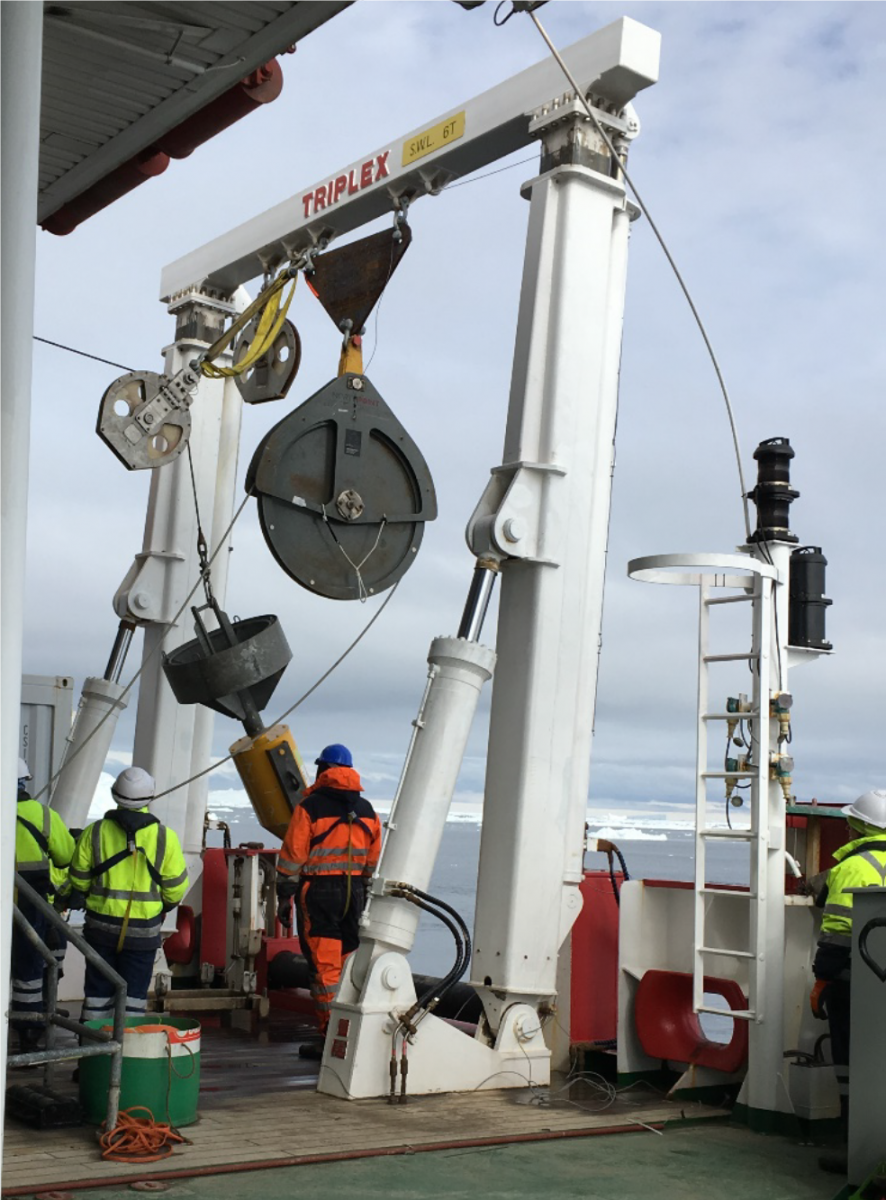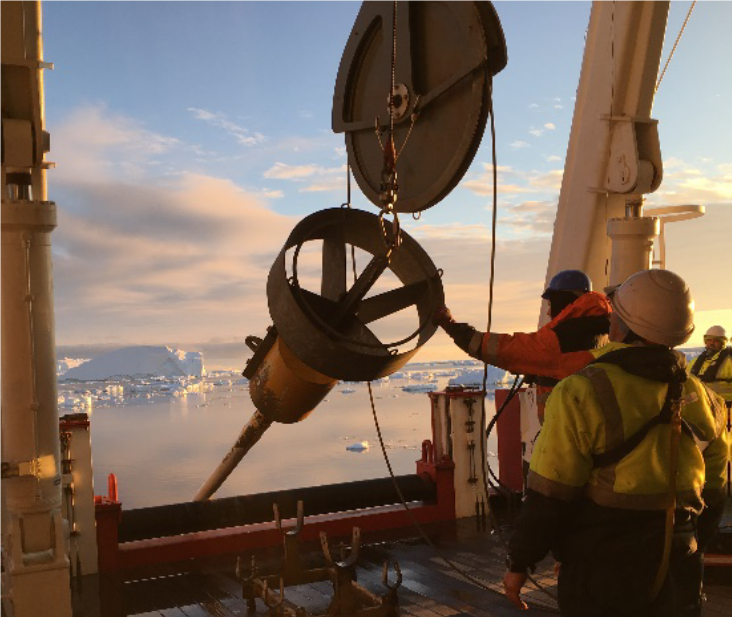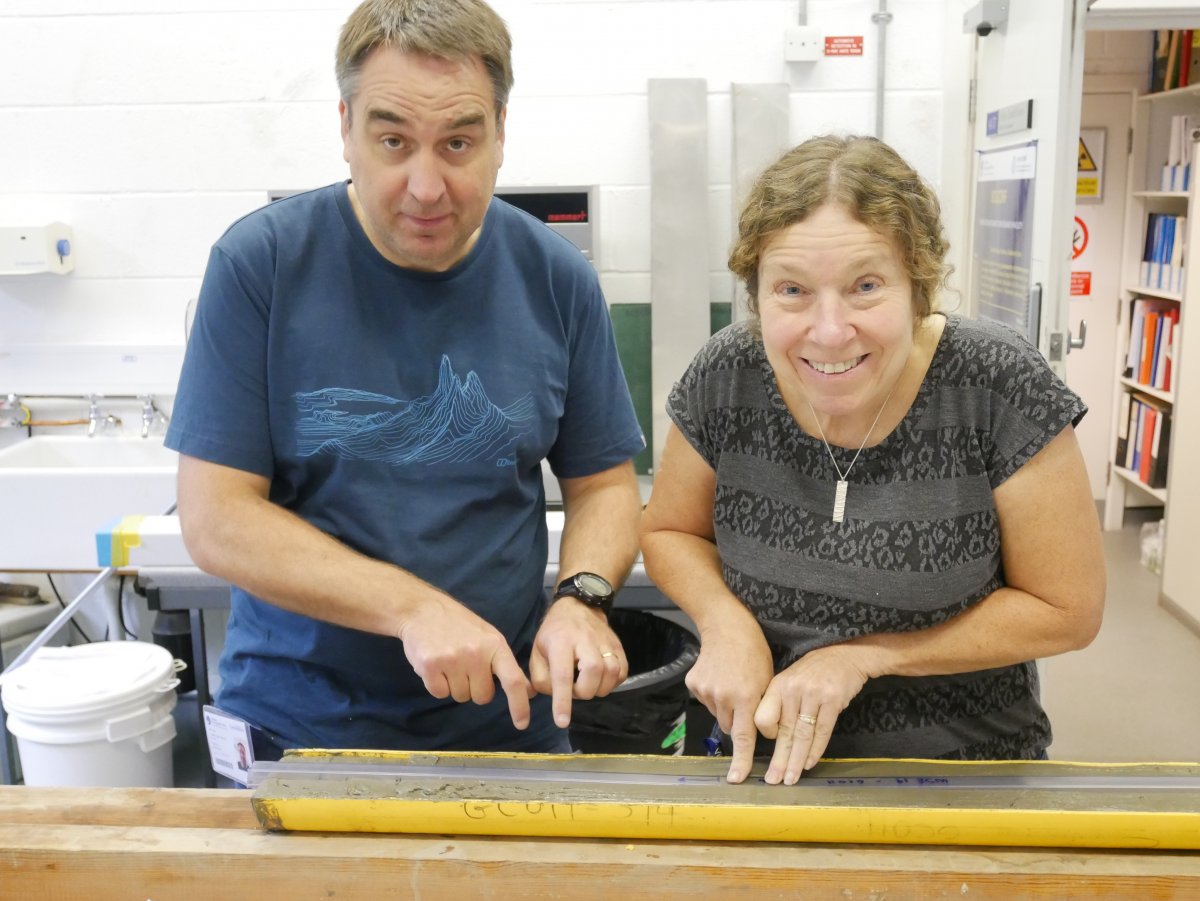The Weddell Sea project is focused on investigating the stability or otherwise of the Larsen-C Ice Shelf (eastern Antarctic Peninsula) on the timescale of decades to centuries to millennia. Ice shelves are floating tongues of ice that extend seaward from grounded Antarctic glaciers and ice sheets on land. They are dynamically part of the Antarctic Ice Sheet and make up about 75% of Antarctica’s coastline and cover about 12% of the total area of Antarctica (1.5 M km2). Ice-shelf change can be driven by shifting atmospheric and ocean conditions, but calving events can also be parts of the natural growth and decay cycle of an ice shelf.
Ice shelves are important not just locally, but more generally because they affect (i) the mass balance and stability of the Antarctic Ice Sheet and (ii) ocean-current circulation. Changes to ice shelves therefore have environmental implications that are of considerable significance globally. Ice shelves act to restrain ice flow from the interior of the Antarctic Ice Sheet. If ice shelves thin, break up and retreat as the atmosphere and ocean waters warm, then ice flow from the interior accelerates and more mass is lost, contributing to global sea-level rise. Melting at the base of ice shelves and calved icebergs releases fresh water which can inhibit the generation of very dense Antarctic Bottom Water; one of the major drivers of oceanic thermohaline circulation.

The Weddell Sea sector of Antarctica is a major source of Antarctic Bottom Water and is surrounded by a number of major ice sheet-ice shelf systems that are changing rapidly in response to recent rapid regional climate warming and influence of relatively warm Circumpolar Deep Water upwelling onto the continental shelf and flowing under these ice shelves. The Larsen A and B ice shelves collapsed in a matter of days in 1995 and 2002, respectively, and one of the biggest calving events ever recorded took place from Larsen C Ice Shelf in July 2017. The western Weddell Sea is among the most inaccessible places on our planet due to near total multi-year sea ice coverage. Therefore, our understanding of the long-term context and significance of recent ice shelf behaviour and the role of climate and ocean in driving ice shelf change is limited.

BOSCORF instrumentation will be used to generate data that will help to constrain the Late Quaternary history of the Antarctic Ice Sheet along the central eastern Antarctic Peninsula and the subsequent formation, stability and change of the Larsen-C Ice Shelf. ITRAX geochemical data will help to constrain changes in ocean circulation and environment, and subsequent ice shelf-ocean interactions, in the western Weddell Sea since the last deglaciation. Additionally, ITrax geochemical data will be combined with physical sedimentological work to assess how the dynamics and stability of the Larsen-C Ice Shelf responded to natural climate and oceanic variability over the past 12,000 years.


